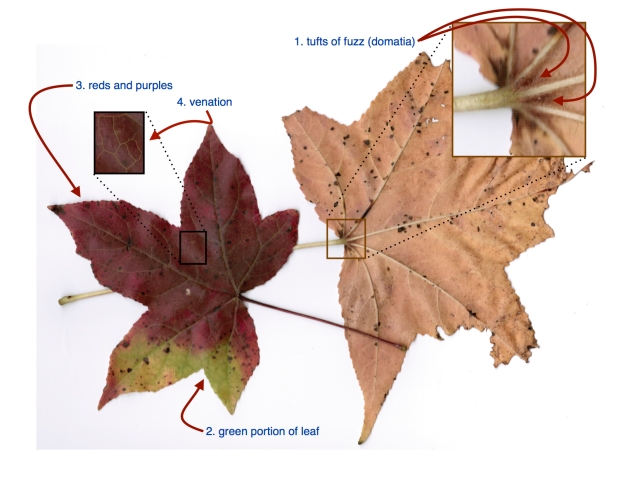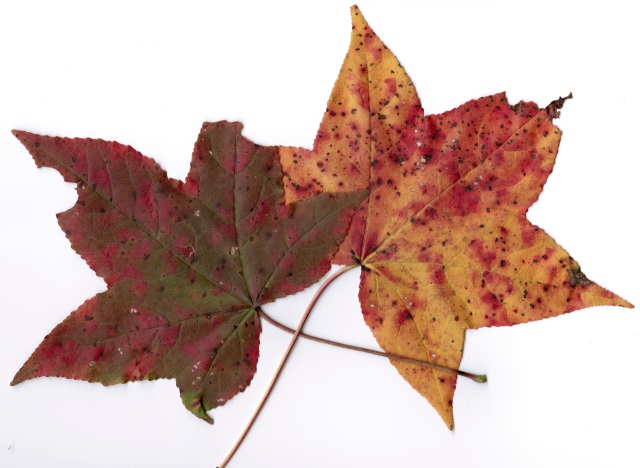
These are sweetgum (Liquidambar styraciflua) leaves. They are quite common here in the Eastern US and give us some very nice Fall color.
1. These tufts of hairs are called domatia, which means little houses. As far as biologists can tell their only purpose is to provide shelter for mites. Think about that: the tree grows little homes for other living creatures! The thought is that the mites sheltered by the domatia are beneficial to the sweetgum tree in that they eat herbivores or fungi that would attack its leaves. The whole story may be much more complex. (See this study of avocado domatia for example.) Do the domatia perhaps harbor harmful mites as well as beneficial ones? In any case, domatia on leaves fascinate me.
2. Chloroplasts appear to still be alive and well in at least this portion of the leaf. Chloroplasts are awesome. (The main reason I’m pointing this out is that my kids insisted that I draw an arrow to the green portion of the leaf.)
3. You may know that yellows, browns, and oranges are present in the leaf during the summer, but are masked by the green chlorophyl. This is not the case for purples and reds, which are pigments produced in the leaf (see fall color on Wikipedia where there is also a nice discussion of possible benefits to the tree of fall coloration.)
4. The patterns of veins in the leaves is called venation. Note that, as highlighted in the blow-up, the leaf veins do not spread as what mathematicians and computer scientists call a “tree” but form many small loops.
Here are some more sweetgum leaves from my wood lot:


I love the whole thing, but I’m just going to comment on one little piece of it. Ever since I was in probably second grade, I had heard that fall colors were present in leaves throughout the summer but were masked by the chlorophyll’s green color. I could believe it about yellows but not about reds. It bugged me for decades until I finally looked it up and learned that the reds came later. I still feel that I haven’t gotten to the bottom of the matter when it comes to the browns that we see in the fall. I’ve read that those are the result of tannins in the leaf. I believe, based on the evidence of my eyes, that those are not present in the leaf in large amounts during the spring, when the leaves are bright green. Leaves gradually darken throughout the spring and summer, so I suspect that tannin content increases as well throughout the growing season.